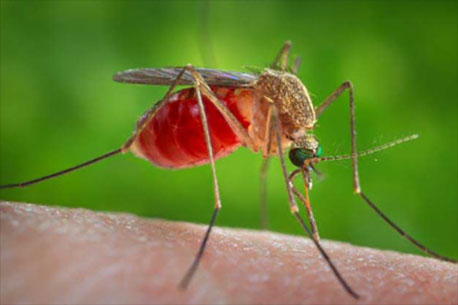Small or large, sneaky or persistent, mosquitoes wait for you to leave the door ajar. Now is the time to assemble your own air force of allies for your protection and outdoor enjoyment.
Give your vampire-fighting allies something worth fighting for. Provide a safe environment with a variety of foods, water, and vegetation. Your backyard oasis should include plants that call to birds and dragonflies, a water feature for birds to enjoy drinks and dragonflies to raise their larvae, and food other than mosquitos for a balanced diet.
Your first recruits should be dragonflies. Dragonflies today have morphed down from their ancestors that possessed a shocking two-foot wingspan. They retained a ferocious need to enjoy dinners consisting of mosquitoes and flies. Dragonflies need a water feature for their larvae to live in until they reach maturity. A tub-sized water feature with plants and rock landings will be a beacon. Even though those flying dragons spend much time in the air, they do enjoy a sunny spot to land and refuel.
While dragonflies are major mosquito munchers, large flocks of birds containing small, stealthy fighters are your top guns. Athletic birds with pointy beaks will strike midair with hungry reflexes. Just like dragonflies, birds need a welcoming environment with water, food, and protective vegetation.
Little birds pack a huge punch. Chickadees that weigh less than half an ounce will eat up to one half of their body weight in insects every day. Chickadees do not eat on the fly but munch dormant skeeters and larvae from vegetation. Swallows, even though their nesting habits are undesirable, eat hundreds of flying insects per hour. By providing appropriate nest boxes, we can give swallows better housing choices. Dense vegetation also provides a hiding place for mosquito predators. House wrens, while being tiny, are easily attracted to your yard and have the appetite of an Olympic swimmer. Their needs are few – nest boxes, no pesticides, and a water feature.
The list of mosquito-munching birds is long. Robins, martins, woodpeckers, swallows, finches, nuthatches, wood ducks, red winged black birds, sparrows, and even chickens eat mosquitos.
One more mosquito-munching bird may surprise you. Hummingbirds will eat hundreds of insects every day, using those insects for proteins and nutrients. Mosquitos are just one of the many insects on a hummer’s menu. They also like ants, aphids, fruit flies, gnats, spider eggs and larvae, and spiders. These little munchers will snatch insects right out of the air or grab them out of spider webs. While hummers are small, a flock in your yard will put a dent in those marauding mosquitos.
Mother Nature provides a balance to overachieving blood stealers like mosquitos. Using Mother Nature’s organic destroyers, like birds and dragonflies, will keep pesticides out of your yard and reduce the number of harmful insects. Your yard will become an oasis with beautiful animals to enjoy in the sunshine without the pain of the proboscis.
Julie Silva is a University of California Cooperative Extension Master Gardener of Tuolumne County.
Read More Details
Finally We wish PressBee provided you with enough information of ( Fighting Mosquitos: Preventing Proboscis Pain )
Also on site :
- Sharon Osbourne says she disinvited greedy band from Ozzy’s Black Sabbath farewell concert: ‘It’s not the time to make a profit’
- China and Russia Keep Their Distance From Iran During Crisis
- Syria Sets Entry Fees for Private Vehicles Crossing via Turkey

